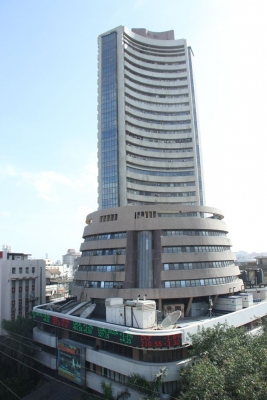300 pc rise in market cap to Rs 400 lakh crore in last 10 years driven by strong economic fundamentals

The strength of the Indian economy, which has emerged as the fastest growing in the world, is being amply reflected in the stock markets with the BSE clocking a 300 per cent growth in market cap to a phenomenal Rs 400 lakh crore and the Sensex soaring from 25,000 points to 75,000 points in the last 10 years of the Narendra Modi government.
According to SEBI chairperson Madhabi Puri Buch, the record valuation of Indian stocks is “an emphatic vote of confidence by foreign portfolio investors (FPI) in India’s growth prospects.”
She pointed out that this was the reason for them continuing to invest in Indian stocks even though the price-to-earnings multiple is higher compared with various other nations.
The Government’s economic reforms and focus on ease of doing business is seeing investments pour into the economy both as FDI for setting up new industry and foreign portfolio investments in the stock markets.
The big-ticket government investments in large infrastructure projects such as highways, ports and seaports have accelerated GDP growth, making India a bright spot amid the global slowdown with a 8.4 per cent growth rate in the Oct-Dec quarter. Both the IMF and World Bank have raised their growth forecast for India and Finance Minister Nirmala Sitharaman expects the economy to post an 8 per cent growth rate.
The country has in the last 10 years made the leap from the lowly ranks of the fragile five economies to the fifth largest economy in the world and is now well on its way to become the third largest.
Inflation has now come down to around 5 per cent and is expected to fall further which is paving the way for stable economic growth ahead.
The macroeconomic fundamentals of the economy have turned stronger with the fiscal deficit well in control following robust tax collections. The lower fiscal deficit will help control inflation as well as leave more money in the banking system for corporates to take loans for investments as the government needs to borrow less.
Economic indicators for the Jan-March quarter have also been encouraging with exports growing at a decent pace despite the disruption in ship movement due to the Houthi attacks in the Red Sea region. This has led to a decline in the current account deficit reflecting a stronger external balance of payments position.
India’s foreign exchange reserves rose for a sixth consecutive week to hit a historic high of $645.58 billion for the week ended March 29, according to RBI data released on Friday.
India’s forex reserves, including the central bank’s forward holdings, can now cover more than 11 months of imports, which is close to a two-year high.
RBI Governor Shaktikanta Das sees the record foreign exchange reserves as a reflection of the strength of the Indian economy.
The RBI Governor also said that the Indian rupee (INR) has remained largely range-bound as compared to both its emerging market peers and a few advanced economies during 2023-24 and was the most stable among major currencies during this period.
“The depreciation of Indian rupee (INR) at 1.4 per cent against the US dollar in 2023-24 was lower as compared to emerging market peers like Chinese yuan, Thailand baht, Indonesian rupiah, Vietnamese dong and Malaysian ringgit and a few advanced economy currencies like Japanese yen, Korean won and New Zealand dollar,” he explained.
Regarding the outlook for the rupee, the monetary policy report states that the nominal exchange rate of the Indian currency saw two-way movements in the range of Rs 82.8-83.4 per US dollar.




